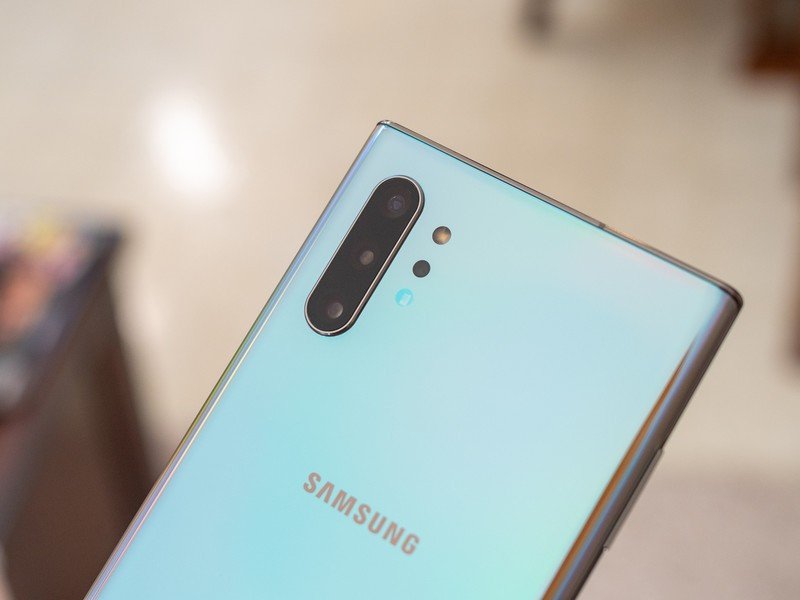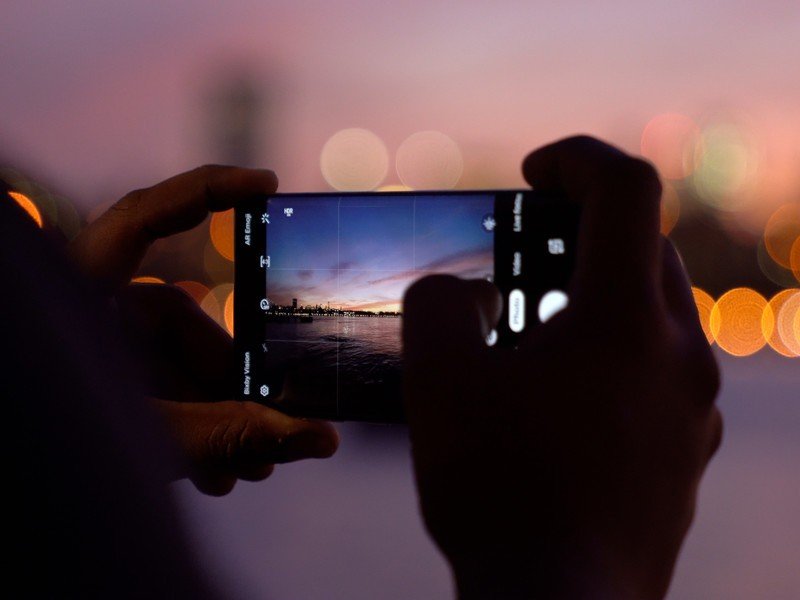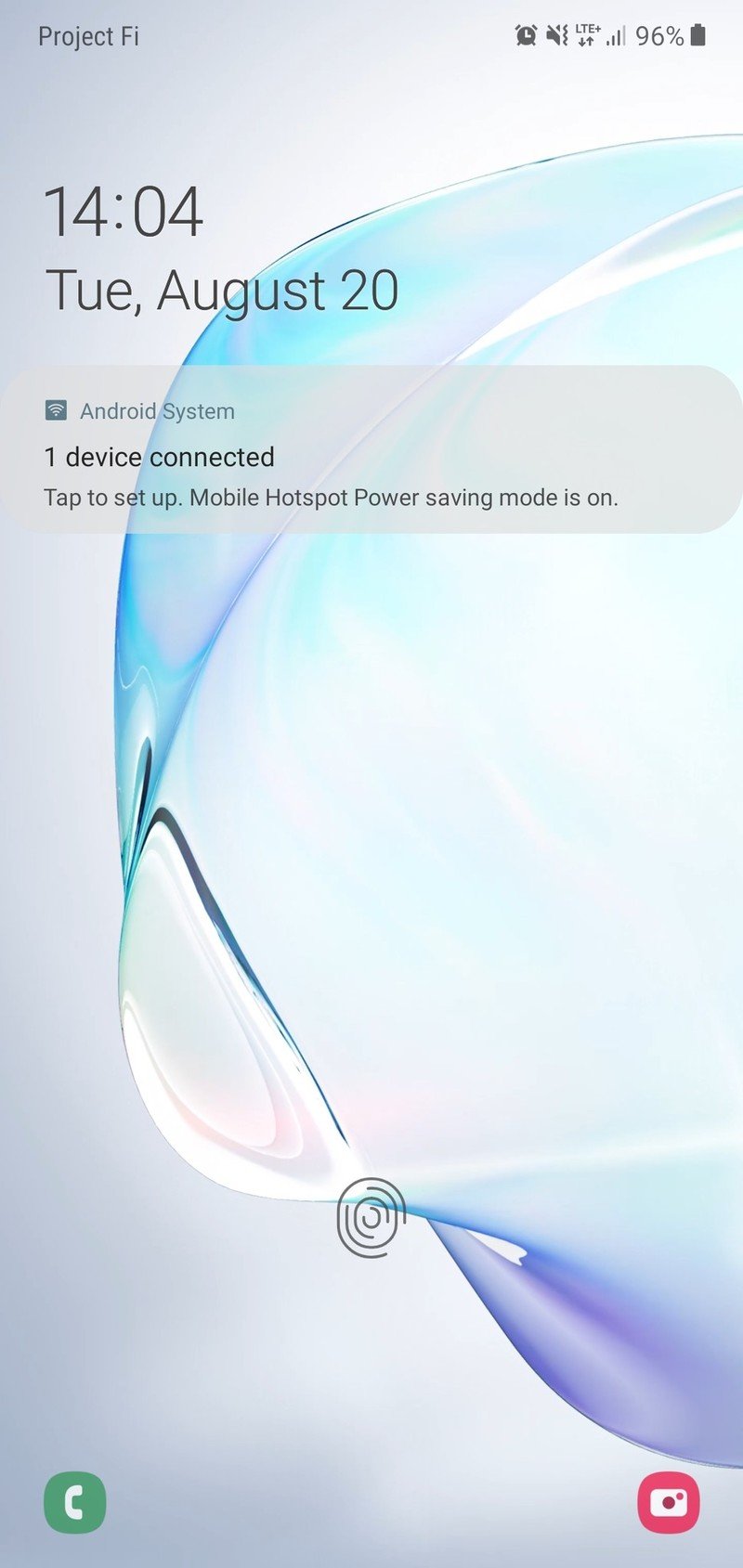With the Galaxy S series being so utterly dominant in the high-end Android phone market, it takes a lot of pressure off of the Galaxy Note. Just about anyone's smartphone needs can be addressed by the Galaxy S10 or S10+; they're the "do everything" phones, available in two sizes at two palatable price points with otherwise identical features and capabilities.
So what can the Galaxy Note 10+ bring to the table when the Galaxy S10+ is still excellent and has only gotten more appealing with price cuts six months after its launch? Naturally, you have the S Pen, a larger screen, even better specs, and a few new productivity features to lean on.
But is that going to be enough to justify its price jump from the Galaxy S10+? After all, the Note is supposed to be the power-user phone of choice. It's for the most discerning of smartphone buyers, the biggest Samsung fans and the stylus faithful. Here's how it all comes together to justify an $1100 price tag.
The Good
- Incredible display
- Hardware looks and feels expensive
- Outstanding performance
- Great battery life and fast charging
- Consistent camera performance
- Best stylus experience on any phone
The Bad
- Low-light camera quality is weak
- Software requires lots of tweaking
- No headphone jack
Galaxy Note 10+ Price & release date

The Samsung Galaxy Note 10+ was officially launched on August 7, 2019, with a retail price of $1,100. For its time, the Note 10+ was one of the most powerful and capable smartphones you could buy. It's now 2020, and while the Note 10+ isn't the latest Note in Samsung's lineup (that title goes to the Note 20 Ultra), it's still a fantastic purchase. Its specs and features hold up really well, and while it lacks 5G connectivity, you can still use it just fine on any major carrier in the United States.
If you're looking to purchase the Galaxy Note 10+ for yourself, there are a few shopping tips you should know — the first of which is that you shouldn't pay full price for the phone. Samsung is known to offer regular discounts for its devices, especially if they've been available for a few months. With Amazon Prime Day 2020 and Black Friday quickly approaching, it's more than likely the phone will go on sale during those savings events.
Get the latest news from Android Central, your trusted companion in the world of Android
It's also worth keeping an eye on what Samsung's offering on its online storefront. As of right now, you can get a $250 instant credit when trading in your old device.
Galaxy Note 10+ Hardware, design, and display

Samsung's hardware design and quality is worthy of applause, but it already was on the Galaxy S10, Note 9, S9 ... well, ever since the Galaxy S6, really. But whether you've held every Samsung phone ever made or this is somehow your first time picking one up, the Note 10+ exudes quality.
The Note 10+ just exudes quality in every possible way.
There's just enough metal (which is an aluminum alloy, not stainless steel) to give you that feeling of solidity between the panes of curved glass. The fit-and-finish is superb, and the 196 gram weight is nicely distributed; albeit heavy compared to the average high-end phone. And while having the power button on the left side now feels awkward at first, its dramatically lower placement, coupled with the removal of a dedicated Bixby button, is a big improvement in overall usability.
That's not to say that the Note 10+ will be easily usable for everyone; it's still quite massive no matter where the buttons are. For the most part you can get around its size, but certain actions like typing with one hand, reaching across the screen for a slide-in drawer and going to the top of the screen for buttons are chores. When you get a Note 10+, you're resigning yourself to have to wait and use two hands for many things — but in return you get a huge screen to look at all the time. Add in its slippery back and smooth edges, and it can instill doubt as to whether you can keep the Note 10+ securely in your hand at all times. (A thin case helped my usage a ton.)
With the metal and glass taken to their logical — and most efficient — conclusion of a rectangular slab, there isn't much Samsung could add in terms of flair. That is, unless you buy the Aura Glow color, which I have in for review. This reflective, shimmering, color-changing exterior is brilliant and completely unique. It looks like a different color from every angle and in every kind of light, which is just downright fun. You'll turn heads.
Complete Galaxy Note 10+ specs





The fact that Samsung continues to lead in display technology should come as no surprise. The Dynamic AMOLED panel, in all its 6.8-inch glory, is once again setting the bar. It's bright, clear, visible in direct sunlight, has great viewing angles and is just as colorful or neutral as you want depending on which display setting you choose.
The fact that Samsung is continuing to lead in display technology should come as no surprise.
The only thing I'm really missing here is the buttery smoothness of the 90Hz display on the OnePlus 7 Pro, but considering that's nowhere near an industry-standard feature I can forgive Samsung for not having it. Especially when every other aspect of the display is excellent.
Samsung didn't stop at the display panel itself: you'll find dramatically smaller bezels and a less-intrusive camera cutout too. The bezels are so tiny at this point that when you pair them with the curved display edges the hardware really does just disappear in your hand and let you focus purely on the screen. Even the small cutout for the front-facing camera fades away thanks to its unobtrusive size and central placement — a huge improvement over the Galaxy S10+.
The tiny bezels are a welcomed change; the trade-off of an odd-sounding top speaker is not.
In order to make that tiny top bezel work, the top speaker had to go deeper inside the phone, which leads to a notable change in the way it sounds. There is a tiny slit at the top of the glass to let the sound out, but it doesn't seem to do much for direction — instead, the sound seems to just bounce around the top half of the phone and come out everywhere. It's great for phone calls because you don't have to position the phone on your ear any specific way, but creates an odd vibration in the phone when listening to anything at higher volumes. It's also not a balanced sound with the single bottom speaker, which is noticeable when holding the phone in landscape.
The Note 10+ follows in the footsteps of the S10 with the same ultrasonic fingerprint sensor, saving from further hardware design complexity. This is the one piece of the hardware equation that goes past "personal preference" to "objectively not good," because this sensor has not aged well in the last six months. It's too slow to recognize or reject a fingerprint, which makes you hesitate every single time you unlock the phone. Pair that with a relatively small recognition area and an always-on display that doesn't show the sensor area prominently, and this is a negative mark on an otherwise exceptional piece of hardware.
RIP, headphone jack
And I suppose I can't close out the hardware segment without mentioning the headphone jack. After years of holding it up as a core tenet, Samsung has finally decided it was time to let it go. You can argue all day whether this should be a standard feature on phones, but only you know whether it's a dealbreaker for your purchase decision.
The headphone jack is gone, and I'm long done complaining about it.
Samsung (somewhat) eases the transition by including USB-C headphones in the box, which unsurprisingly are the same as the 3.5 mm AKG buds from previous phones and sound just as good. A USB-C to 3.5 mm adapter would've been a nice addition, but Samsung charges you $15(!) for one of those.
I've been using phones without a headphone jack for a long time now and it doesn't really bother me, so I was on my merry way using the Note 10+ with Bluetooth headphones just like I do my Pixel 3 XL. Ultimately, your choice now is to either buy a Note 10+ and keep the S Pen but lose the headphone jack, or buy a Galaxy S10+ and get the opposite. The headphone jack is gone, and I'm long done complaining about it.
Galaxy Note 10+ Photo and video

I made it clear from the start that Samsung's insistence on keeping the same cameras — a 12MP main, 16MP ultra-wide and 12MP telephoto — from the Galaxy S10 was prone to be a shortcoming of the phone. It's not that the S10's cameras are bad — they're actually very good — but that they're already not the best in every respect today, and when there's clear room for improvement Samsung didn't make any.








Daylight photos are excellent from all three cameras, and each is incredibly consistent.
I can't levy a single complaint at the daylight photo quality, which is frankly superb and stands up to any other phone. Photos are crisp with great detail, filled with color, and exhibit strong dynamic range. Samsung still tends to over-saturate and over-expose a little, but I'd happily take erring on that side of things than the opposite. Photography nerds can apply tweaks and edits to get it just right, but the way Samsung does things is best for the average person who wants to share the photo straight out of camera.
The main camera is obviously the best of the three, but in good lighting the ultra-wide camera is fantastic and the telephoto strikes a fine balance between providing you with a unique perspective and losing a little quality. I would prefer if the telephoto was a more aggressive 3X zoom considering a digital 2X zoom on the main sensor is comparable in quality, but that's a small complaint.








All of my disappointment with the Note 10+'s cameras lies in low-light quality, which frankly hasn't kept up.
All of my disappointment with the Note 10+'s cameras lies in low-light quality, as has been the case with Samsung's cameras for years. As soon as the light goes down, you can rule out the wide-angle and telephoto cameras; though that's par for the course for most phones. What's problematic is that the main camera starts to fall apart sooner than I'd like with mixed or low light.
Frustratingly, the photos are bad in different ways depending on the low-light scenario. Sometimes you get a too-high ISO with lots of grain, other times a too-slow shutter with hand motion blur, and sometimes it's over-sharpened chroma noise; or you get some combination of the three. In any case, the excellent shot-to-shot confidence the camera gives you in good lighting is erased in low light scenes — it usually takes a couple tries, and in many cases I'm still not satisfied with what I get.
Now and then you can get lucky with Night Mode, which takes an excruciatingly long time to capture and sometimes produces a photo with more balanced colors and less noise. But most of the time all Night Mode can offer up is a brighter, but still subpar, shot. It's no competition for the Pixel's Night Sight in any way.
Low-light quality is passable, but that isn't good enough when Google and Huawei are doing substantially better.
The low-light quality is passable, but passable isn't good enough for an $1100 phone that exists in a world where Google and Huawei (and heck, even Sony) are doing great with nighttime photography. For cameras that are so good in so many ways, and didn't need any changes in daylight capture, it's disappointing to not see any noticeable low-light improvements.
On the other side, the front-facing camera is great, with good colors and auto focus to make sure your selfies are always sharp. I sure wish Samsung would've gone with a little wider field-of-view lens, because when you shoot front-facing video the crop gets a little too tight; this probably won't be a vlogger's go-to smartphone unless they want to use a short selfie stick.
Incredibly impressed by the Note 10+'s video stabilization so far. This is Pixel-esque smoothness. pic.twitter.com/yEasyz0d6pIncredibly impressed by the Note 10+'s video stabilization so far. This is Pixel-esque smoothness. pic.twitter.com/yEasyz0d6p— Andrew Martonik (@andrewmartonik) August 19, 2019August 19, 2019
Samsung did make changes in the video department, continuing the pitch of the Note 10 as being for video creators. There's enhanced video stabilization, Live Focus (bokeh) effects in video, and audio recording that tracks with the focus of your framing.
The new video stabilization is a substantial improvement, and it all happens automatically.
The new video stabilization is spectacular, now rivaling Google's excellent stabilization. Whether you're just walking down the street, in a car on a bumpy road or whatever, the Note 10+ will smooth out the video incredibly well. And it does so without introducing blurriness or a "jelly" effect, which is impressive in its own right. The microphone focus happens just as seamlessly, giving you better directed audio just like you'd expect.
The Live Focus effects are roughly as hit-or-miss as they are with photos, though small issues with edge detection are easier to ignore with a moving subject. They provide a little something that can spice up your videos, but you'll probably be more likely to just take nice clean (and steady) video without the effects unless you have a specific shot in mind.
Galaxy Note 10+ Software, features and battery life

The Note 10+ may be running One UI 1.5, ostensibly an update from the S10's software, but the changes come in the form of the handful of new Note features rather than any dramatic movements in the interface or user experience. This is still the familiar One UI everyone on a Galaxy S8 and newer has been using.
Source: Android Central
The software takes a considerable amount of work to get just right, but once you're done you'll be happy.
The inclusion of more Microsoft apps and services isn't intrusive whatsoever, as you can choose which apps to install during the initial setup process — or uninstall the ones you don't want later on. Samsung's insistence on having all of its own apps alongside the Google and Microsoft (if you install them) apps is more of an annoyance. I hope that the self-realization of shifting away from its own services to Microsoft's can also kickstart a re-evaluation of its overall app strategy going forward. The launcher lets you hide the apps you can't disable or uninstall, which is a good route to go if you're annoyed by the clutter.
And that's the name of the game for making Samsung's software work well: configure, disable and tweak. There are fewer features to be found, and fewer enabled by default, but there's still a lot to wade through on first startup. It can be overwhelming, and it takes several days to get everything set up just how you like it, which is a poor user experience. But once you go through the trouble, you can make the Note 10+ look and act exactly how you want.
The Note 10+ offers amazing performance no matter what you need to get done; it just won't quit.
Once I have everything set up to my liking, Samsung's software works just fine. I actually like the default launcher, I don't feel the need to apply any sort of theme to change the styling, and I'm used to the way it works at this point. I realize I don't use every feature that's available, but that's not really the intent — you should be able to find and use just what you want and leave the rest disabled.
No matter what you do, you're going to find amazing performance on the Note 10+. That shouldn't come as any surprise with a Snapdragon 855 and staggering 12GB of RAM, but I couldn't do a single thing that made the Note 10+ so much as hesitate — let alone stutter or actually have a problem. That's precisely what we all expect from this level of phone, but it's still worth noting. You're spending top dollar and getting top performance no matter what you throw at the Note 10+.
Battery life and charging
One of the benefits of having a huge phone is its correspondingly huge battery. 4300mAh is a whole lot to work with, and Samsung makes good on the Note's reputation for great battery life.
This is everything you want: incredible battery longevity and daily consistency.
I use my phone with as few power-saving measures as possible. I don't rely on Power Saving Mode, I use automatic brightness, I leave Always-on Display turned on, and I leave the whole host of apps and accounts syncing and pushing notifications. I stream a lot of podcasts and YouTube Music over Bluetooth, take a lot of photos, and keep up with plenty of email and social media updates. With a typical 16-17 hour day, I was heading to bed with about 20-25% battery remaining on a consistent basis. (These days usually have 3-5 hours of "screen on" time, for those who like that sort of stat.)
Samsung continues to have great battery life consistency, both throughout the day and from day to day. Nothing seems to dramatically drain the Note 10+'s battery, and I could always count on the same general percentage drop throughout each day no matter how I used it. Predictability in battery life is just as much of a feature as actual longevity in my book. The Note 10+ isn't going to be a two-day phone by any means, but in my entire review period I wasn't once worried about it dying prematurely.
We finally get charging speeds to match the Note's big battery.
The Note 10+ finally pairs that big battery with appropriate charging speeds, including a 25W charger in the box and support for 45W charging if you have the right adapter and cable. That 25W brick can get the phone from 0-100% in about 70 minutes, which is excellent for such a huge capacity. The 10-70% run, which is arguably more important, only takes roughly 30 minutes.
The Note 10+ won't take 45W from just any charger, unfortunately — you need both a USB-C power adapter that supports Programmable Power Supply (PPS) and an "e-marked" USB-C cable. Finding both is a struggle right now. But knowing the phone will take that charge using the in-box charger, Samsung's official 45W charger, and some other chargers (with more to come) is great now and going to get better over time.
Making use of the S Pen
I'll freely admit that I have never been a diehard S Pen fan. It could be that my handwriting is that bad. Or that I'm not much of an artist. Or that text input via typing or speech-to-text is simply much faster than writing with a stylus. Whatever the reason, the utility of the S Pen is mostly lost on me.
You can't deny the S Pen's capabilities — the only question is whether the features appeal to you.
But even still, I can't downplay the importance of the S Pen. Note users come to me regularly with a description of how the stylus fits into their workflow, and each and every one is valid. Taking quick notes on the lock screen throughout the day, signing and returning PDFs, and marking up documents for review are all great uses for the S Pen, and they may be the sorts of things you could see yourself doing on a regular basis. The S Pen has incredible accuracy and pressure sensitivity, is easy to write with, and has software support to back it up — you don't have to install anything to make full use of the S Pen for all of the aforementioned use-cases.
Whether you see value in the S Pen for these functions is purely a personal decision — not relying on them myself, I clearly won't be able to convince you — but it's undeniable that the technology is phenomenal and unique. You can't get this quality of stylus control on a phone anywhere else; so if those uses sound appealing, the Note 10+ is where it's at.
The chance you'll find something to use air actions for regularly is low.
The S Pen feature that's far more dubious is "air actions," which let you control apps from a distance with the S Pen. Building on what debuted with the Note 9, you can now hold the S Pen's button and make gestures — up, down, left, right and circular — to do even more. Just like before the functions are limited to just a few apps (basics like camera, gallery, internet, etc.), and just like before it's a neat novelty but not something I came to rely on.
There are specific use-cases like controlling the camera while it's propped up or in a tripod, or controlling the Gallery while the phone's facing another direction or plugged into a TV … but outside of that it's just not very compelling. Getting the gestures to work right takes a little time, but they're generally reliable once you do so — the bigger issue is there just aren't many interesting things you can do with them. My phone spends its time in my hand, and when it isn't in my hand I'm never going to be holding just the S Pen.
Making sense of DeX for PC
The DeX environment itself doesn't seem to have appreciably changed with the Note 10+, but Samsung has changed up the way it works so that you can now plug directly into a Windows or Mac computer and run the DeX desktop in a window. "DeX for PC," as it's called, makes way more sense than the original vision of plugging your phone into a dedicated dock with its own keyboard, monitor and mouse.
DeX for PC makes dramatically more sense than buying a dock just to use your phone like a computer.
Everyone has a PC or Mac and a USB-C cable handy to run DeX, whereas just about nobody was going to spend $100+ on a DeX dock and keep it connected to a standalone monitor and peripherals. I tested DeX for PC on my MacBook Pro, installing DeX and also Smart Switch (which is required for file transfers). Just plug in your phone, and it works! You get a window with the DeX desktop environment, which you can resize or run full-screen if you wish.
Source: Android Central
If you used DeX before and found use for running your phone's apps on a larger screen, you'll love this. If you haven't … you may be disappointed. Most apps don't resize or go into landscape mode, and generally don't translate well to a laptop-sized screen — something we've learned from a couple years using Android apps on Chromebooks. Browsers and productivity apps like email clients and word processors work well though, and if you're someone who has sensitive data locked up via an enterprise security system, this may be the easiest way to access and edit files on a larger screen.
The biggest feature that was appealing for me (and many others) was the ability to drag-and-drop files between the computer and DeX, but this only worked in one direction for me: from the computer to the phone. This could be a macOS limitation, or some odd incompatibility, but I went through all of the required steps and even uninstalled and reinstalled both DeX and Smart Switch to try to get it to work — but no dice. I hope it works better for Windows users, because the seamless transfer of files between the phone and computer could be the killer feature for people who want to seamlessly work between their phone and laptop.
Galaxy Note 10+ Bottom line

The historical goal of the Galaxy Note is, at least, twofold: to make a single device that represents a culmination of everything Samsung is capable of at a given point, and to continue to offer the industry's only high-end phone with a stylus. The latter is just a given — it's a Note, it has the S Pen, and nothing else comes anywhere close to competing with it.
Nowadays, "Note" just means "has an S Pen" — and that's really it.
The former is, for the first time now, in question. Samsung isn't so much failing to achieve as it is changing what the "Note" means. Nowadays, "Note" just means "has an S Pen" — and that's really it. With the removal of the headphone jack, generally iterative improvements or stagnant features, and the introduction of the smaller Note 10 that's out-classed in some ways by the S10+, the Galaxy Note no longer represents the biggest and best Samsung can do. It's simply a great phone — one that's great in all of the same ways Samsung's other phones are, but with an S Pen.
Is that a problem? Not really. Samsung's phones are excellent, and I've stood behind my decision to, on multiple occasions, list the latest Galaxy S as my favorite phone of the year and the one that I recommend to the most people. The Galaxy Note 10+ is excellent in all of the same ways. Giving people the choice to have a slightly larger (or smaller) phone with an S Pen and a few notched-up specs only expands Samsung's addressable market.
4 out of 5
The lens through which this represents a problem is from the point of view of the bigtime Note fans. Slowly but steadily, from the launch of the Note 5 onward, the Galaxy Note has become less special, less cutting-edge, less interesting and less groundbreaking compared to Samsung's other phones. Samsung can say all day and night that the Note is still the biggest and best phone made for its most passionate and serious users, but the product available on the shelf simply doesn't follow that ethos. The Galaxy Note 10+ is still fantastic, but it's an easy argument to say that Samsung isn't doing right by those diehard Note fans anymore. It's still winning, but it's coasting to victory rather than accellerating.

Samsung Galaxy Note 10+
The Note 10+ is undeniably better than the Galaxy S10+ in several ways. But its improvements are, for the most part, marginal. It's the best phone Samsung makes, but it may not be worthy of the price jump over the S10+.

Andrew was an Executive Editor, U.S. at Android Central between 2012 and 2020.










